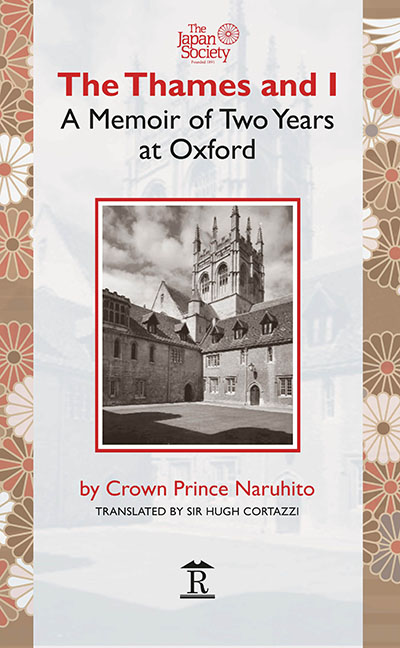Book contents
- Frontmatter
- Foreword
- Preface to the English edition
- Contents
- Foreword to the Paperback edition
- Preface to the Japanese edition (1992)
- Translator’s Note by Hugh Cortazzi
- The Gakushūin
- Chapter 1 Ten Days in the Japanese Ambassador’s Residence:
- Chapter 2 Life in Colonel Hall’s House:
- Chapter 3 Entering Oxford:
- Chapter 4 About Oxford:
- Chapter 5 Daily Life at Oxford:
- Chapter 6 Cultural Life at Oxford:
- Chapter 7 Sport:
- Chapter 8 Life as a Research Student at Oxford:
- Chapter 9 Travels in Britain and Abroad:
- Chapter 10 Looking Back on My Two Years’ Stay:
- Postscript
- Bibliography
- Index
Chapter 4 - About Oxford:
Published online by Cambridge University Press: 13 May 2022
- Frontmatter
- Foreword
- Preface to the English edition
- Contents
- Foreword to the Paperback edition
- Preface to the Japanese edition (1992)
- Translator’s Note by Hugh Cortazzi
- The Gakushūin
- Chapter 1 Ten Days in the Japanese Ambassador’s Residence:
- Chapter 2 Life in Colonel Hall’s House:
- Chapter 3 Entering Oxford:
- Chapter 4 About Oxford:
- Chapter 5 Daily Life at Oxford:
- Chapter 6 Cultural Life at Oxford:
- Chapter 7 Sport:
- Chapter 8 Life as a Research Student at Oxford:
- Chapter 9 Travels in Britain and Abroad:
- Chapter 10 Looking Back on My Two Years’ Stay:
- Postscript
- Bibliography
- Index
Summary
‘Dreaming spires’
Ishould like to give a brief introduction to Oxford. The modern city of Oxford has a population of over 100,000. It lies some ninety kilometres to the northwest of London on the middle reaches of the Thames. The name Oxford derives from the two words ‘ox’ and ‘ford’ meaning a river which an ox could walk across. In England there are many place names ending in ‘ford’ such as Stratford and Bradford where there were shallow places at which a river could be crossed fairly easily. The Oxford crest naturally shows an ox crossing a river. The centre of Oxford and the main street in the city is the High Street which runs east to west. The main buildings of the city are ranged on either side of the High Street to the north and south.
In the north of this central area are St Mary's Church, All Souls, Queen’s, Brasenose and a number of other colleges as well as the Bodleian Library and its annex Radcliffe Camera. To the north and facing on to Broad Street is the Sheldonian Theatre while on the south side of the High Street are University College and Oriel together with shops and restaurants. Going west from the High Street you come to Carfax crossroads which is the busiest spot in Oxford. Turning north you then come to the Cornmarket which is a shopping street: if you turn south you come into St Aldate's street where you can see the tower of Christ Church. Going further south you reach a bridge over the Thames. Suburbs of the city lie south of the river and of Christ Church Meadow which is a large field by the river. To the north there are various green spaces including University Park while to the east is the Cherwell, a branch of the Thames, which flows under a bridge by the side of Magdalen.
For a view of the city in its entirety you should go towards Headington and South Park in the north-east of the city and climb the gentle green slope. The old college buildings, churches and towers will appear one by one as you look back.
- Type
- Chapter
- Information
- The Thames and IA Memoir of Two Years at Oxford, pp. 32 - 45Publisher: Amsterdam University PressPrint publication year: 2019



